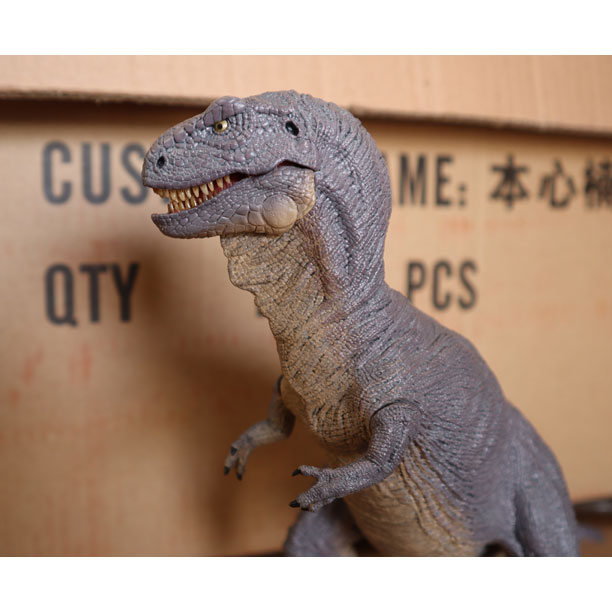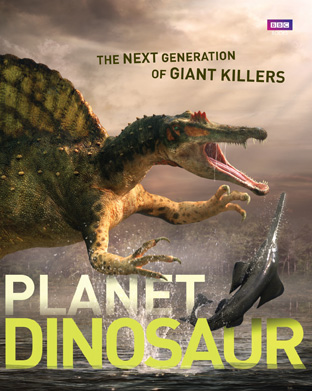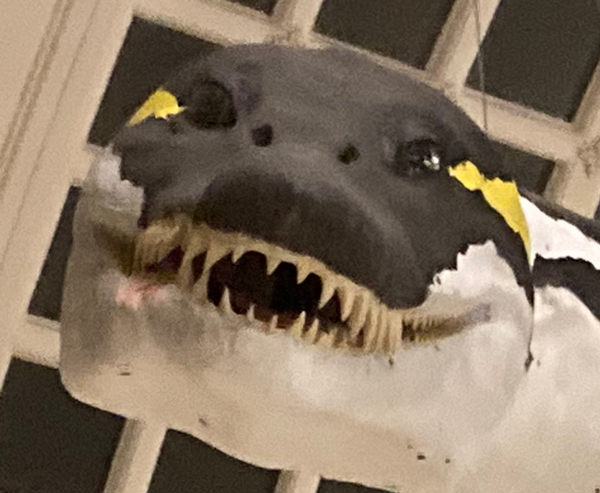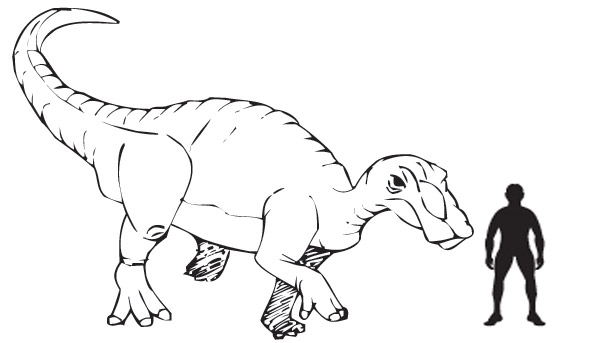New Research Challenges Theory of Hibernating Dinosaurs in Polar Regions
It is now known that dinosaurs inhabited the polar regions during the Mesozoic. Recent studies of Alaskan rocks dating from the Cretaceous has revealed the fossilised remains of a surprising prehistoric ecosystem with dinosaurs surviving four months of near total darkness in what would have been the Arctic winter. In the southern hemisphere the fossils excavated from the famous Dinosaur Cove and East Gippsland sites have provided palaeontologists with data on dinosaurs that inhabited the southern polar forests – small hypsilophodonts such as Leaellynasaurua, Qantassaurus and the bizarrely named Atlascopcosaurus.
Polar Dinosaurs
It had been suggested that dinosaurs hibernated to escape the worst of the cold weather, as although the polar regions were much warmer than today, temperatures would have fallen below freezing in the long cold, totally dark winters.
However, a study of fossilised dinosaur bones from Victoria (Australia) have revealed that dinosaurs which once lived in the Antarctic Circle were little different to those living in other parts of the Southern Hemisphere when it came to staying active year-round. This new evidence suggests that polar residents, those Antarctic dinosaurs may not have hibernated.
During the Cretaceous Period Australia was much further South than it is today, and parts of it sat inside the Antarctic Circle. This meant that it would have experienced total darkness for many months of the year and the conifer and fern forests would have been affected by frosts and falls in temperature to below freezing.
In a paper published in the online scientific journal PLoS One, a joint US and Australian research team challenge the hibernating dinosaurs theory, as, with the discovery of more dinosaur bones from Victoria they have more fossil bones to study and they question their previous hypothesis that some dinosaurs may have hibernated in order to survive the harsher winter climate.
An Illustration of a Hypsilophodontid Dinosaur
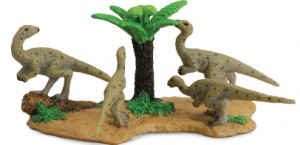
CollectA Hypsilophodon family group.
The hypsilophodontids were a very successful group of ornithopods. Most were small and cursorial, living in the shadow of larger herbivores such as the iguanodonts. Interpretations of hypsilophodont fossil bones discovered on the Isle of Wight led some palaeontologists to be believe that these nimble creatures were arboreal. Scientists now doubt whether these animals were tree dwellers – however, discoveries made in China and North America suggest that a number of dinosaur genera were adapted to a life in the trees.
The ‘hibernation hypothesis’ was based on the presence or absence of tree-ring-like growth markings, called lines of arrested growth (LAGs), in cross sections of fossilised bones. LAGs can be used to determine the age of an animal; they form as a result of an animal’s slowed metabolic processes, such as those experienced during hibernation.
All but the smallest dinosaurs were found to have LAGs, the researchers revealed in the study, the smallest dinosaurs being juveniles experiencing rapid growth, which slowed down as these animals reached maturity.
The physiology of these “polar” dinosaurs “strongly resembled” that of their warmer-clime cousins, says study co-author Professor Patricia Vickers-Rich at Monash University.
She stated:
“Based on bone microstructure alone, we can say that the dinosaurs living near the South Pole were not physiologically different from dinosaurs living anywhere else in the world during that time. This tells us something very interesting: that basically from the very start, early dinosaurs, or even the ancestors of dinosaurs, evolved a physiology that allowed an entire group of animals to successfully exploit a multitude of environmental conditions.”
Co-author Dr Thomas Rich of Museum Victoria in Melbourne, stated that with more fossils excavated from sites such as Dinosaur Cove, being able to study additional fossils led to a “change in ideas”. He explained that their earlier investigations, published thirteen years ago, relied on observations from just two species. The researchers had been trying to figure out when animals developed the ability to hibernate to cope with extreme cold periods.
For the new study, the researchers analysed bones from perhaps as many as eighteen species of dinosaur, mostly hypsilophodontids (two-legged, plant-eating dinosaurs) that lived 112-100 million years ago, in the Early Cretaceous. The palaeontologists remain unsure as to just how many hypsilophodontid species the fossil bones represent, as the fossils are “mined” out of the cliff face and are fragmentary.
University of Queensland palaeontologist Dr Steve Salisbury, who was not involved in the study, is not surprised by these findings. He explains that LAGs are not exclusive to hibernators.
“Most exothermic animals – those that depend on environment for regulation of body temperature, such as crocodiles, turtles, various lizards – go through periods of faster growth and slower growth.”
Dinosaur bone growth would most likely have been linked to the seasons. Slower bone growth (and therefore, LAGs) is likely to occur during cooler seasons and when resources are in short supply.
Dr Salisbury added:
“Gradually evidence is emerging, and a better understanding of dinosaur growth and physiology is showing that [the hibernating dinosaur theory] was a good story at the time, but it probably doesn’t hold up today.”
He continued stating that whilst the many months of darkness would have been an issue, climatic conditions were probably not as harsh as found near the poles today.
“These dinosaurs existed when Australia was still connected to Antarctica and there was no Southern Ocean encircling Antarctica, which meant that warm tropical currents could circulate down to very high latitudes and that would have kept the continent much warmer than it is now.”
While the revelations discount the hibernation theory, they still don’t give the whole story about the differences in dinosaurs that lived around the poles and those that didn’t. Dinosaurs may have been very similar to their relatives living in lower latitudes according to this analysis of microstructure in fossilised ornithopod and theropod bones, but they may have behaved differently. Perhaps these animals huddled together to keep warm, this would have resulted in a more social, pack animal. Perhaps these dinosaurs did not hibernate fully but like modern crocodiles facing harsh environmental conditions they entered into a state of torpor – estivation.
It is interesting to note that as far as we at Everything Dinosaur know, birds don’t hibernate. They do migrate to avoid harsh weather, perhaps a number of dinosaurs were seasonal visitors to the polar regions, exploiting the continuous plant growth encouraged by the twenty-four hours of daylight experienced in the polar summers. However, these small hypsilophodontids were too small to migrate far, they may have been permanent residents which brings in the intriguing possibilities of endothermy and feathered dinosaurs (feathers primarily for insulation).
For models and replicas of hypsilophodontids and other bird-hipped dinosaurs: CollectA Dinosaur Models.



